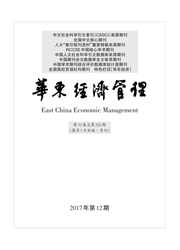

 中文摘要:
中文摘要:
文章选择江苏省13个样本城市2004-2013年间物流行业统计数据,基于引力模型测度了城市间的物流引力;引入物流隶属度进行辐射范围划分,呈现了江苏省区域物流的轴辐与点对点组合式的网络结构。结果表明:江苏省城市物流发展水平"南高北低、西强东弱";现有网络结构节点密度参差不齐,可靠性较差。为保证江苏省区域物流的协调发展,各城市要因地制宜,充分利用各自区位优势,根据功能定位和产业优势,推动城市合作;政府部门应加强政策与市场的有机集成,以有效促进各城市物流产业的协同发展。
 英文摘要:
英文摘要:
By analyzing the logistics industry statistical data of 13 sample cities in Jiangsu province from 2004 to 2013,this papercalculates the logistics gravity between cities based on the gravity model,combines logistics membership index to determine thecoverage of hub cities,and presents the regional logistics layout in a combination of fully-connected and hub-and-spoke networkstructure in the province. The results show that the development of urban logistics is not balanced,appearing"developed in thesouth and west,less-developed in the north and east"in the province,and the node density of the existing network structure isuneven and its reliability is poor. To guarantee the coordinated development of regional logistics in the province,cities should adjusttheir measures to local conditions and make full use of their geographical advantages,and promote urban cooperation accordingto their functional positioning and industrial advantages,while government departments should strengthen the integration of policiesand markets to effectively promote the coordinated development of logistics industry between cities.
 同期刊论文项目
同期刊论文项目
 同项目期刊论文
同项目期刊论文
 期刊信息
期刊信息
